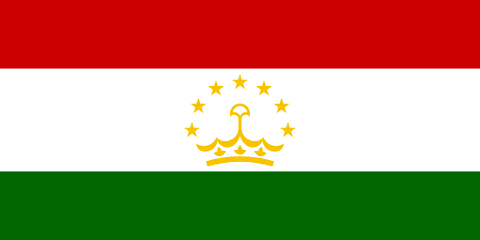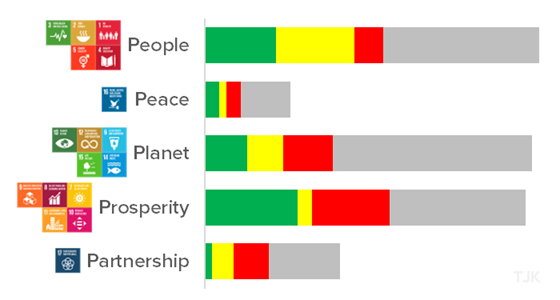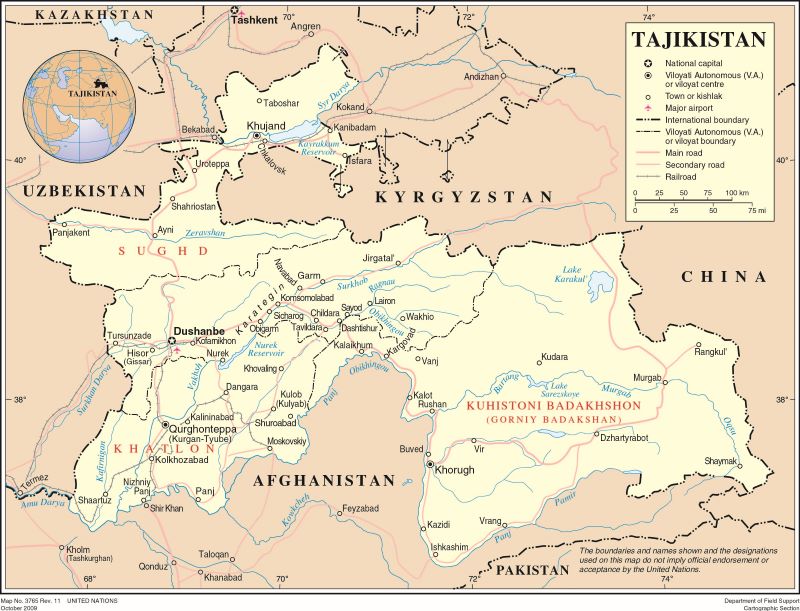Central Asia - Tajikistan

Tajikistan, a mountainous country in Central Asia, has made significant strides towards achieving the Sustainable Development Goals (SDGs) since adopting the agenda in 2015. Tajikistan has made notable progress in reducing poverty, improving access to healthcare and education, and promoting gender equality. In 2017, Tajikistan as an early champion presented its first Voluntary National Review (VNR) at the United Nations High-Level Political Forum on Sustainable Development, which highlighted the country’s progress and identified priorities for future action.
Progress in SDGs

Based on Global SDG Indicators and Diagnostics 🟩 On Track 🟨 Mixed / For Review 🟥 Off Track ⬛ Trends NA
SDG Accelerators
🔷 2.2. Ensure food security. Target 2.2, focusing on food security and (mal)nutrition, holds significant importance for Tajikistan. It addresses eradication of worst form of poverty (Goal 1) by ensuring access to nutritious food. Despite significant progress in reducing prevalence of children stunting (by half from 30% in 2010 to 15% in 2020). However, further efforts will be focused on prevalence of children wasting and anaemia among women deteriorate, reflecting persistent malnutrition.
Access to safe and nutritious food improves health outcomes and benefits educational achievements (SDGs 3 and 4). Moreover, it links closely to SDG 8, creating employment and contributing to rural economic growth. Guarantee of women’s rights to access and control resources (1.4, 5.a) is essential for ensuring food security.
Target 2.2 aligns with SDG 12’s emphasis on sustainable consumption and production, with co-benefits that promote sustainable food systems and waste reduction. By building resilient agricultural practices (Target 2.4), Tajikistan can mitigate climate change impacts (Goal 13) and support climate action. Ultimately, ensuring food security fosters social stability (Goal 10), reduces conflicts arising from food scarcity (Target 16.1), and promotes good governance (Targets 16.6, 16.7).
🔷 4.3. Quality education for everyone. In Tajikistan, SDG target 4.3 aims to ensure equal access to quality technical, vocational, and tertiary education. Tajikistan shows reasonable 11.7 expected years of schooling in 2021 and good progress in upper secondary education completion rate (which increased from 61 to 76 over past decade). Further efforts will be focused on ensuring quality of education, equal access and early child development.
SDG 4.3 and related 4.4 have important interlinkages with other SDGs, especially Goal 8 trough improving employability, reduce skills mismatch, and ensuring future-readiness of the people in the workforce, and ultimately reduced poverty (Goal 1). This will promote equal access to labour market for women/girls and men and further empowerment of women to participate into the local labour market (Target 5.5).
Quality technical education will equip individuals with skills aligned with labour market demands, fostering decent work and economic growth (Goal 8). Quality technical education and future-proof skills are important driving factors of industrialization (Target 9.2) and sustainable urbanization (Target 11.1). Ultimately, equal access to technical education will reduce inequalities and promotes social inclusion (Goal 10).
🔷 9.2. Promote inclusive and sustainable industrialization. SDG 9.2 aims to foster inclusive and sustainable industrialization in Tajikistan for enhancing its economic growth (Goal 8) and job opportunities, especially for young people (Target 8.6). Despite recent improvements, manufacturing value added as a proportion of GDP and per capita remains relatively low in Tajikistan (around 12% in 2016-2019). Economic policies (Target 8.3) play important role in industrialization, as well as reliable access to energy (Target 7.1) and infrastructure (Target 9.1).
Another accelerator for industrialization is adequate skill formation (Targets 4.3, 4.4), and ensuring future-proof skills. It is closely linked to investment in women and girls across all levels of decision-making in political and economic life (5.5) and enhancement of use of technology to empower women (5.b).
However, the pursuit of industrialization also entails trade-offs. It requires careful consideration of environmental sustainability, as industrial activities can have adverse ecological impacts—affecting ecosystems (Goals 15, 2), potable water (Goal 6), health of people (Goal 3). Rapid industrialization could put pressure on energy access (Target 7.2) at the expense of energy sustainability (Targets 7.2, 7.3). Ensuring inclusivity in this process is crucial to prevent potential social, gender, and territorial inequalities (Goals 10, 5)
🔷 11.1. Safe and affordable housing and basic services. In Tajikistan quality of life—in terms of affordable housing and basic services—varies significantly by regions. On average only 55% of population using safely managed drinking water services, and 74% have hand-washing facility. Further efforts should ensure universal access to electricity (Target 7.1) and high share of renewable hydropower in electricity generation (Target 7.2), taking into account non-sustainable urbanization and lack of affordable fuels result in high air pollution in urban areas, affecting health of population (Target 3.9).
Non-sustainable urbanization and lack of affordable fuels result in high air pollution in urban areas, affecting health of population (Target 3.9).
Providing universal access for all to adequate, safe and affordable housing and basic services requires investments in resilient infrastructure (Targets 9.1, 9.4) to make them climate change and disaster ready (Targets 1.5, 13.2). It will contribute to reduction of inequalities (Goal 10) and reducing conflicts (Goal 16). It also could have positive impact on sustainability of ecosystems (Goals 6, 14, 15)
The dynamic map shows SDG Accelerators for Tajikistan.
Use buttons to highlight certain paths and Focus to explore certain targets
See 📊 SDG Push Diagnostic for Tajikistan
Read the 📑 Integrated SDG Insights Report for Tajikistan
Voluntary National Reviews
🌐 Voluntary National Review 2023
🌐 Voluntary National Review 2017
